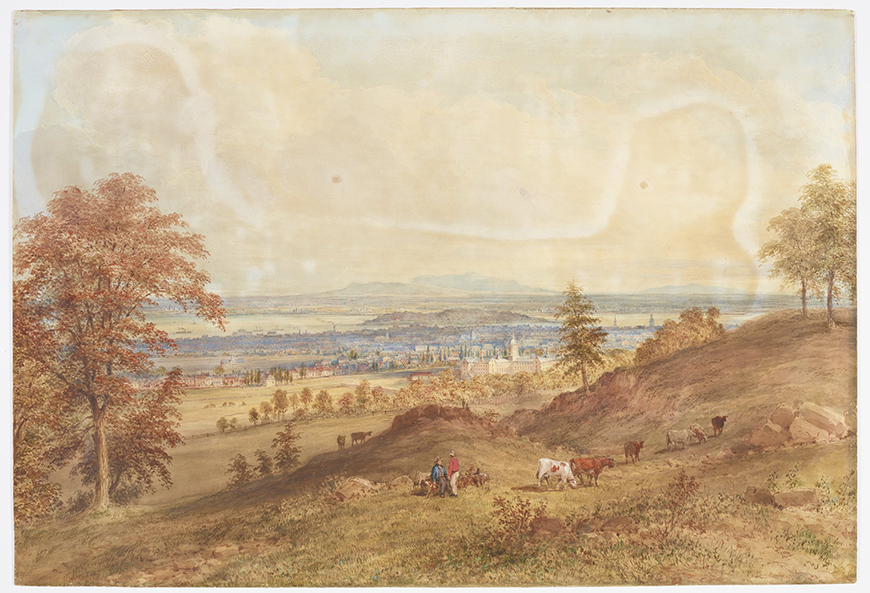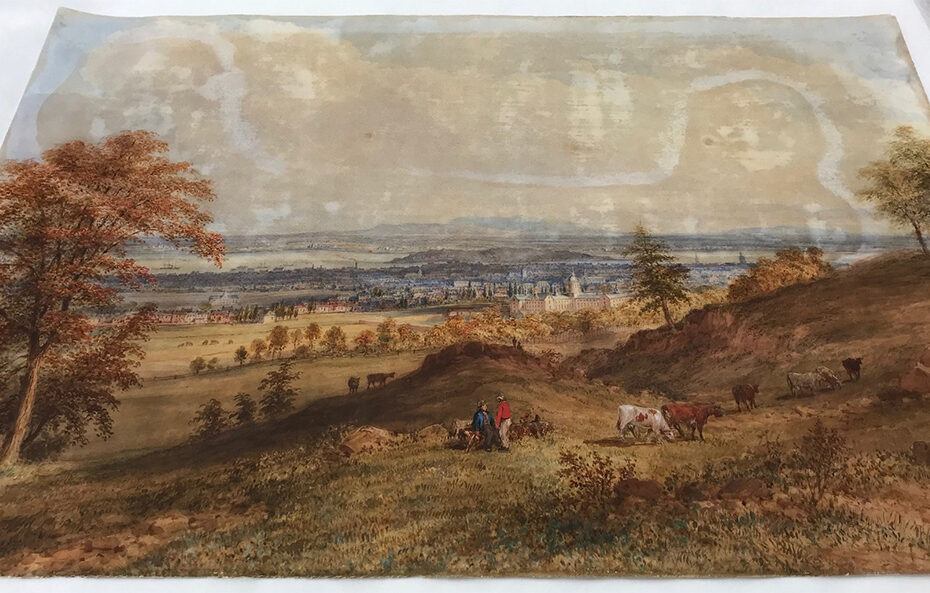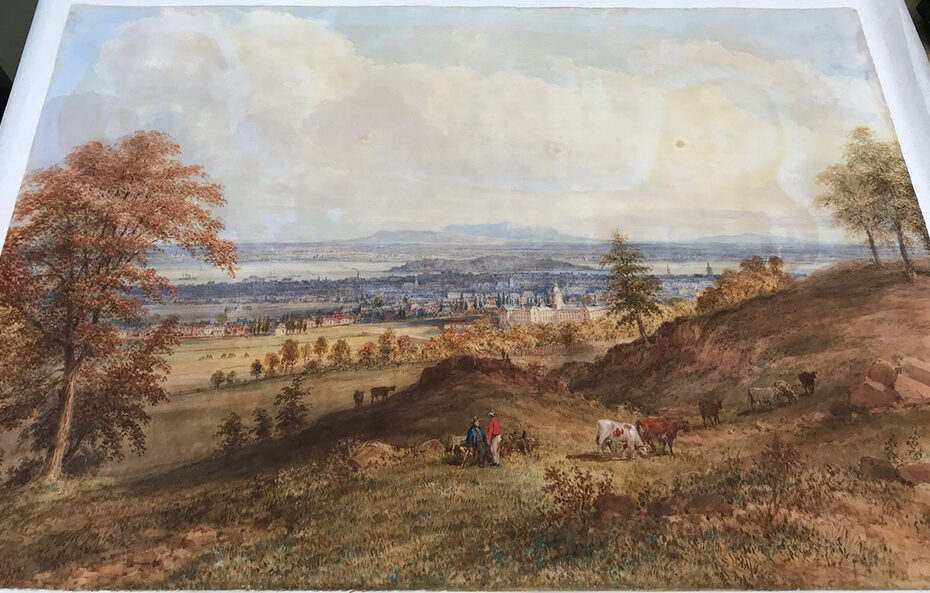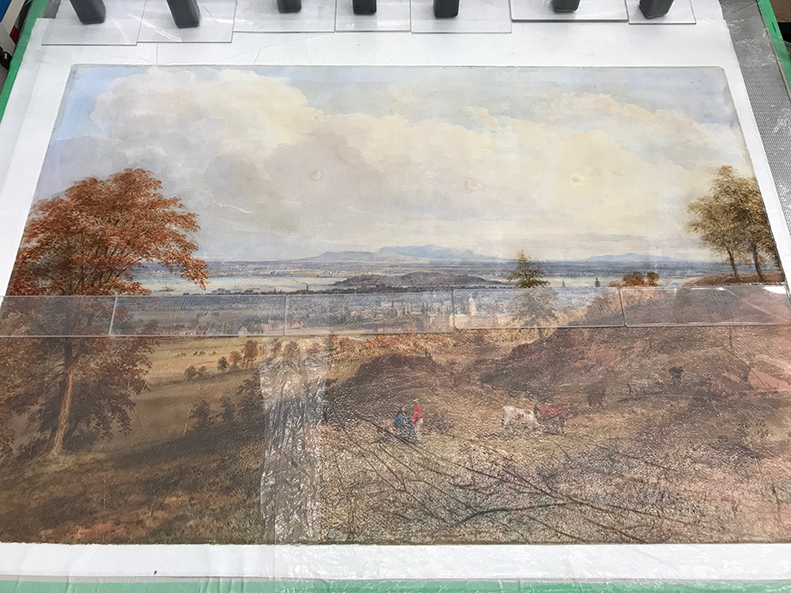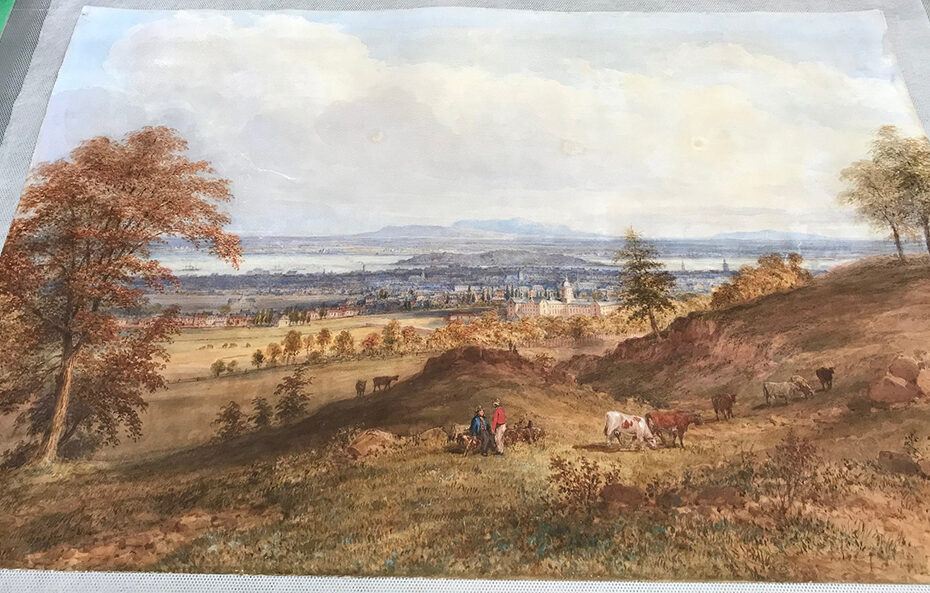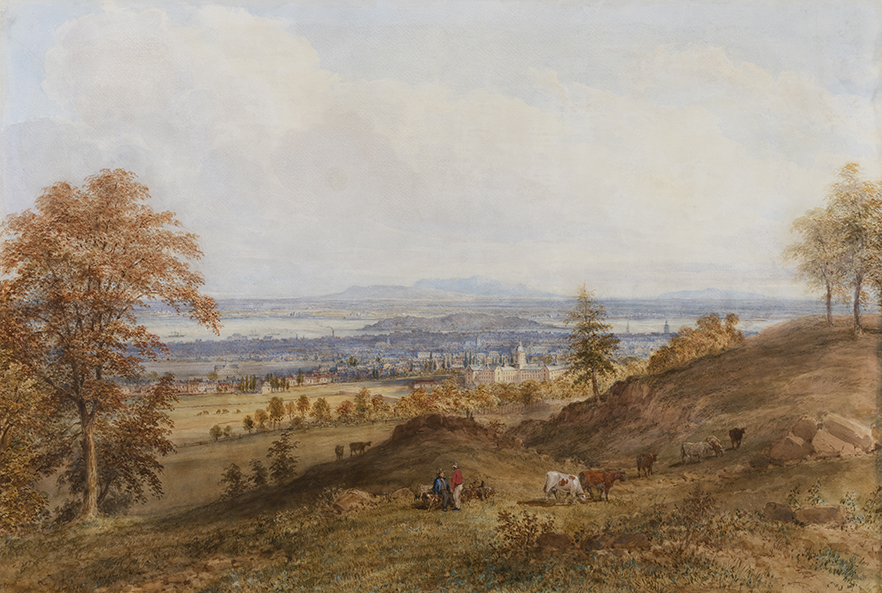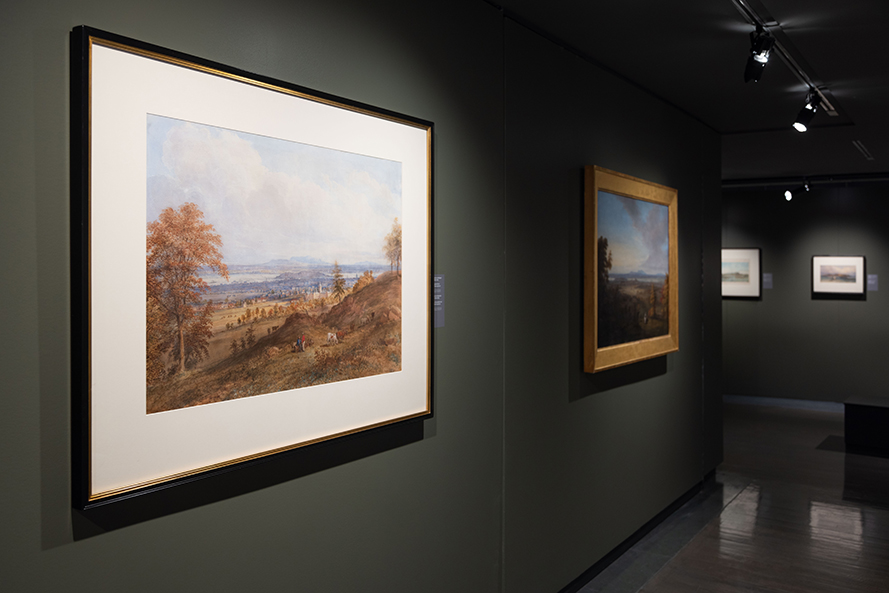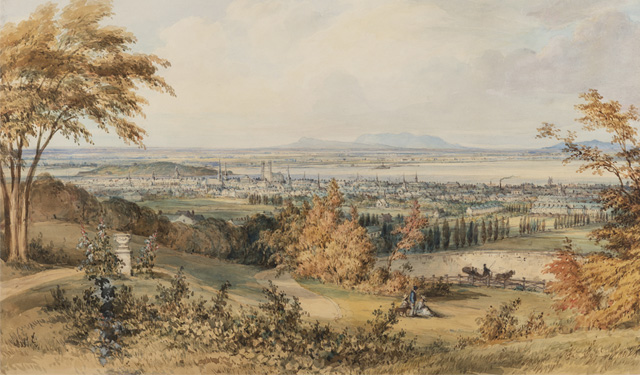Bringing the art of James Duncan to light
Combining manual skill with scientific knowledge to improve the material stability and aesthetic integrity of a work.
December 22, 2023
Multidisciplinary artist James Duncan (1806-1881), originally from Coleraine in the north of Ireland, settled in Montréal in 1830. His many watercolours, gouaches, and oils captured landscapes and scenes of daily life in Montreal and the environs.
On view until April 21, 2024, the exhibition Becoming Montreal: The 1800s Painted by Duncan features some one hundred of the artist’s works from 1830 to 1880, notably several of his most spectacular watercolours. Among these is Montreal from the Mountain Showing the Hôtel Dieu, a picturesque landscape from 1865. This great work, like all works on paper, is delicate and susceptible to damage. The McCord Stewart Museum’s Conservation department wanted it restored to its best condition before it went on display. The work was therefore sent to the Canadian Conservation Institute (CCI) for treatment in fall 2018.
Condition
The watercolour exhibited various stains and discolouration. It had been mounted on a secondary support of acidic cardboard, rendering the primary support—wove rag paper—more fragile, unstable, and acidic. A yellowish discolouration seemed to darken the entire work. In addition, part of the sky appeared to have suffered water damage, which left a large, shapeless brown-orange stain over most of the image and prevented viewers from appreciating the composition.
These problems not only damaged the aesthetics of the work, they could have continued to erode its physical condition, had it not been treated.
Treatment
The role of an art conservator is to combine manual skill with scientific knowledge to improve the material stability and aesthetic integrity of a work. Conservation interventions are designed to slow deterioration with the help of techniques and materials that are reversible.
The aim of this treatment was therefore to stabilize the work and improve its aesthetic condition, ensuring it more closely resembles Duncan’s original depiction in preparation for the exhibition.
The first step in the treatment was to remove the secondary support, a highly acidic cardboard. Very common in 19th-century watercolour works, cardboard supports can cause staining, yellowing and deterioration of the paper, the primary support. The pictorial composition was then dry-cleaned to remove any accumulated dirt and some brittle media that had previously been used to try to hide some of the staining.
Extensive tests on the solubility of the artwork were carried out to establish whether aqueous treatment was possible. Water is one of the best solvents to remove soluble, yellow degradation products and generate the chemical reaction needed to reduce the staining.
Though it might seem counterintuitive to use water to safely treat a watercolour painting, over time, the gum arabic-based binder in the paints becomes increasingly insoluble. This change can happen differently for different colours, however. For instance, inorganic pigments made from minerals may behave differently than organic dyes, so paper conservators carefully test each solution to be used on each colourant, exploring and really getting to know the materials to manage the risks before undertaking the treatment.
Since Duncan employed a widely varied colour palette, all the colours in the composition were carefully tested with various solvents to determine the pigments’ sensitivity. These tests also verified each solvent’s effectiveness at eliminating stains.
Based on the results, a gellan gum treatment was chosen. Instead of applying water as a liquid, the conservator used this rigid gel (similar to a hard slab of Jell-O) to slowly introduce water in a controlled manner. This method optimizes the properties of a wash, pulling out soluble degradation products while it is applied to the work, without overly swelling the paint media. After an overall washing with gellan gum, another paper conservation tool—the suction table —was used for close work on the sky portion of the work. Working in stages, the conservator gradually removed the heavy staining.
After the final drying, the stains were barely perceptible, and the tone of the composition was brighter. Removing the overall yellow cast changes the tone of the whole composition, restoring James Duncan’s fall colours, while the blue of the sky can now be appreciated without the distracting stains.
The slight losses of watercolour pigment (where overpainting had previously existed) were in painted to unify the composition. The primary support was reinforced with Japanese paper, attached to the back using wheat starch paste, a strong, transparent, flexible adhesive. This adhesive is commonly used by paper conservators as it is reversible, does not become brittle, and does not discolour over time. Japanese paper is an acid-free, long-fibred paper available in different colours and thicknesses, so as not to disrupt the aesthetics of the work. Unlike the acidic cardboard that previously supported the work, neither of these materials will be a source of damage going forward. Finally, the painting was framed in an acid-free mat using Japanese paper hinges glued with wheat starch paste.
This 16-month treatment was meticulously carried out by Crystal Maitland, Senior Conservator, Works of Art on Paper, at the CCI.
Preservation
Following its treatment, Montreal from the Mountain Showing the Hôtel Dieu presents an aesthetic more in keeping with James Duncan’s original intention so viewers can better appreciate the painting’s composition. Through a combination of scientific knowledge and meticulous handiwork, conservator Crystal Maitland has brought aesthetic and material stability back to this work of art.
Preserving works of art requires preventive conservation efforts as well as technical treatments. Since watercolours are highly sensitive to light, they must be exhibited at reduced light levels. They must also be displayed and stored in a temperature- and humidity-controlled environment with stable, acid-free framing and storage materials. These measures will ensure that the artwork is preserved for many years to come.

